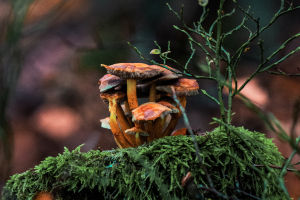At first glance, trees seem quiet, passive, and rooted in place—literally. But new science shows that trees might be far more aware and responsive than we ever imagined.
In fact, trees can remember past events like droughts, extreme temperatures, and even insect attacks.
That's right—trees have memory. Not the way we remember a birthday or a song, but a biological memory that helps them survive and adapt. Let's explore how it all works.
What Does "Tree Memory" Mean?
When we talk about memory in trees, we don't mean brain-based thinking. Trees don't have brains or nervous systems. Instead, they use chemical signals, hormone changes, and cellular responses to "record" what's happened to them before.
For example, if a tree experiences a long drought one year, it may respond faster and more efficiently the next time water becomes scarce. That's not a coincidence—it's memory in action.
They React Differently the Second Time
Scientists have found that trees often respond faster or more strongly when facing a challenge they've encountered before. This includes:
• Closing their leaf pores faster during a second drought
• Producing more defensive chemicals after a previous insect attack
• Adjusting flowering or leaf-shedding timing based on past seasons
This means that trees don't just react—they learn and adapt.
The Role of Epigenetics
One of the key ways trees store memory is through epigenetics. This means changes to how their genes work, without changing the genes themselves.
When a tree goes through a stressful event, certain genes are "switched on or off." These switches can remain in place for months or even years, helping the tree respond better in the future.
It's like the tree writing a survival note to itself—"Next time it gets hot and dry, close the leaves earlier!"
Tree Rings Hold the Past
You might have seen tree rings before—those circles inside a tree's trunk that show its age. But they tell more than just how old a tree is. These rings record the story of a tree's life.
• Narrow rings? That year was likely dry or stressful.
• Wide rings? Good weather and plenty of water.
• Unusual patterns? Maybe a fire or pest outbreak happened.
In this way, tree rings are natural memory logs, helping scientists study climate history, environmental change, and even forest health.
Trees "Talk" to Each Other Too
Trees don't just remember for themselves—they sometimes warn their neighbors. Through underground root systems and networks of fungi (often called the "wood wide web"), trees can send chemical messages.
For example, a tree under insect attack might release warning signals into the soil, prompting nearby trees to boost their own defenses early. That's cooperation—and it's based on shared memory through communication.
Why Tree Memory Matters
Understanding how trees remember helps us:
• Protect forests more effectively
• Predict how trees will handle climate change
• Grow stronger, more resilient plants in agriculture and urban areas
It also changes how we see nature. Trees aren't passive—they're active participants in their own survival.
Let's Reflect, Lykkers!
Had you ever thought a tree could "remember" something? 🌳
Maybe next time you walk past an old tree, you'll wonder what it's been through—droughts, storms, or sunny decades. Drop your thoughts or questions in the comments—we'd love to hear how this changed the way you see trees!
From their quiet wisdom to their deep roots in the past, trees have more stories to tell than we ever knew. And now, we know—they never really forget.


